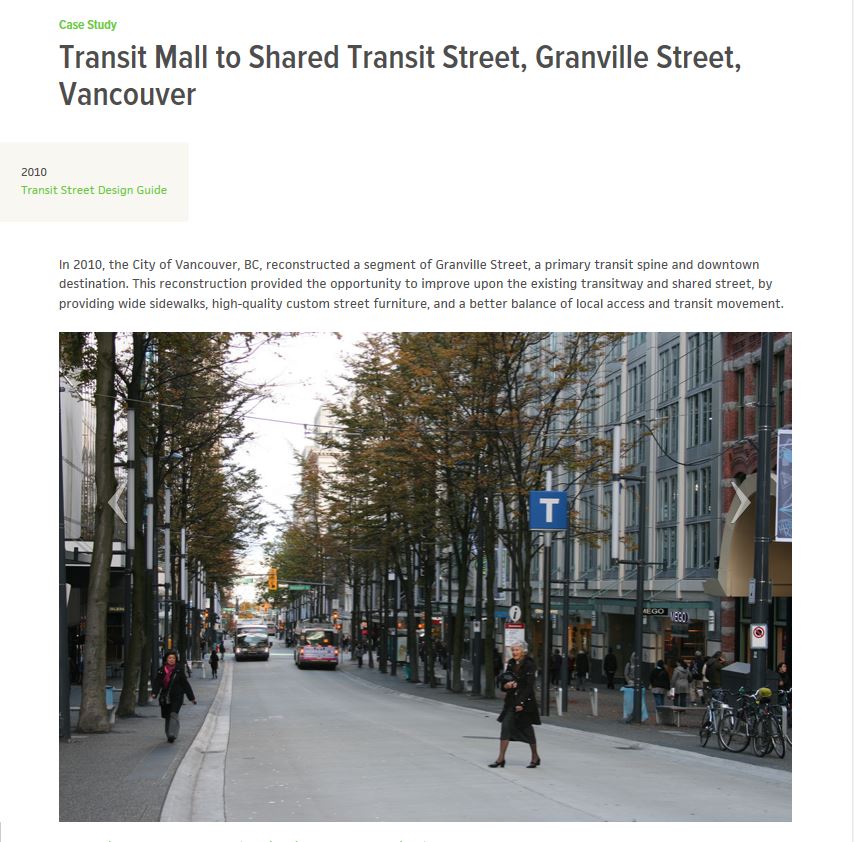Angie Schmitt in Streetsblog notes the reluctance of the ‘establishment’ engineering profession to get with it :

Cities around the country are trying out new street design treatments that put walking, biking, and transit first. What makes this new wave of street design all the more impressive is that city Departments of Transportation (DOTs) have to do it without much guidance from the nation’s transportation engineering establishment.
The bibles of American street engineering still don’t recommend designs like protected bike lanes. If these industry standards ever do catch up to modern practice, the pace of change would accelerate, as more engineers feel comfortable designing multi-modal streets. But so far, guides like the Manual on Uniform Traffic Control Devices (MUTCD), which lays out rules for pavement markings and traffic signals and signs, have been slow to adapt.
 The engineers who control the manuals are in no rush to embrace change. Following the emergence of more city-friendly street design guides published by National Association of City Transportation Officials (NACTO), the National Committee on Uniform Traffic Control Devices, which publishes the MUTCD, established a “task force” to investigate “interest groups that may not be part of the NCUTCD” and propagate street designs that don’t conform to their rules.
The engineers who control the manuals are in no rush to embrace change. Following the emergence of more city-friendly street design guides published by National Association of City Transportation Officials (NACTO), the National Committee on Uniform Traffic Control Devices, which publishes the MUTCD, established a “task force” to investigate “interest groups that may not be part of the NCUTCD” and propagate street designs that don’t conform to their rules.
Old-school American engineers like to say that NACTO-endorsed street designs are unproven and need more study before their safety can be certified. Meanwhile, traffic deaths in the United States are soaring while countries with street design philosophies closer to NACTO’s continue to achieve safety gains. …
These engineering manuals are like bibles; adherents are very reluctant to depart from received scripture. Fortunately, as Angie mentioned, there are other testaments from the National Association of City Transportation Officials :

NACTO’s site also offers a Case Study Finder for up-to-date examples around North America. But the only example in Vancouver is from the “Transit Street Design Guide” – Granville Mall:


Vancouver’s pioneering work in protected bike lanes and the new design of the Burrard Bridge intersections should surely be included.













Canada isn’t nearly as bad, our new TAC design guidelines will include protected bike lanes including protected intersections. Happy to see that we are finally getting ahead of the US in this.
Possibly the confusion by the author is in the lack of understanding of the difference between functional planning and detailed design. One is more “art”, the other more “science”. Both are important. MUTCD helps spec out designs based on safety fundamentals to ensure designs obey the laws of physics in context with human psychology. It does not tell you where or how to plan a roadway or whether bike lanes should be protected or not.
Planning-level data such as origin-destination and household travel surveys, as well as demand models (where you can estimate volumes by mode on schematic roadways), give you guidance and/or justification for the type of facility.
Once you decide on the facility at a functional level, these “bible-ish” manuals help to ensure designs are standardized. Why? Because standards help expectations, which from a psychological point of view is important for humans to quickly react and make decisions. Hence the name “Manual on Uniform Traffic Control Devices”, key word being “uniform”. If every city came up with their own custom road signs, that would cause a lot of problems. And so the scope of the MUTCD is more in a generic sense, with clear wording that the engineer should use the manual as a guide and always consider due judgement.
Why is there no “Manual on Uniform Transportation Planning”? That would probably be dangerous because where a uniform approach to road design makes sense, I’m not sure having the same transportation planning design works given cities and regions all have different geographies and shapes, much like humans. But there are and should be many best practices and guidelines on transport planning. However these are not as strict as design standards for obvious reasons.
I encourage those that are critical of these “engineering bibles” to read over them. There are many developed at the national, provincial, and even city level. They help to keep us safe. But don’t blame them for poor planning, which from my experience is usually due to a lack of understanding of demand and behavioural patterns (i.e. void of planning data). Likewise, I encourage engineers to better understand the policies and mandates of city building and why we can’t just build a freeway through neighbourhoods.
But do not fret because come the dawn of autonomous vehicles, we won’t need traffic signs or controls anymore. All regulatory controls will be virtual, in the software and out of the visual way for people to enjoy the scenery of the symbiotic co-existence of technology and man….